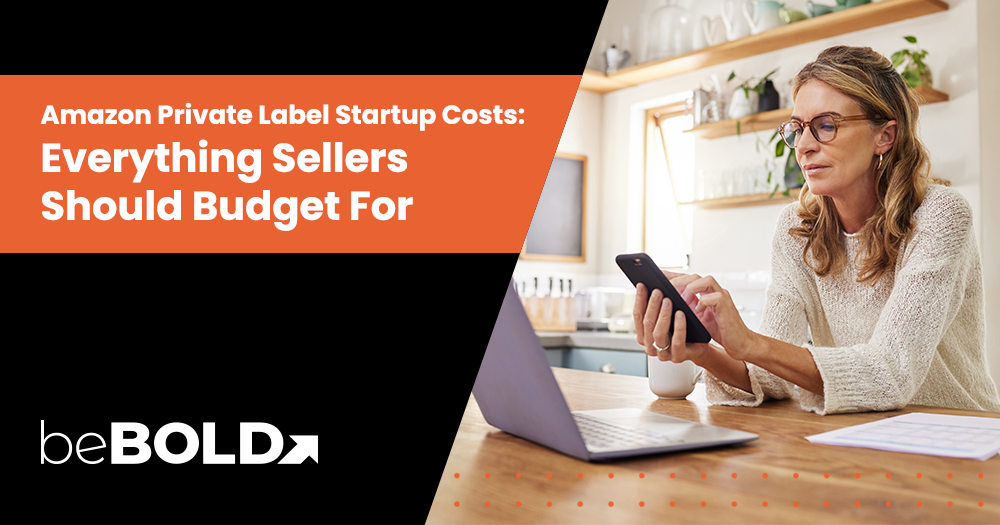Key Highlights
- Amazon brings in high-intent shoppers who value speed and convenience
- eBay attracts deal-seekers, collectors, and fans of secondhand treasures
- eBay gives you creative freedom; Amazon locks you into strict listing formats
- Amazon’s FBA handles logistics but comes with fees and rules
- On eBay, you're in charge of shipping—more freedom, more work
- Sell new and private label products easily on Amazon
- eBay is a goldmine for used, vintage, and one-of-a-kind items
- Amazon charges referral and FBA fees; eBay uses listing and final value fees
- eBay lets you run auctions or set fixed prices; Amazon is fixed-price only
- Amazon buyers want Prime-level delivery; eBay buyers are more flexible
- Branding is easier on eBay with custom storefronts
- Amazon helps you scale fast thanks to massive traffic and FBA
- Dropshipping is strict on Amazon but easier to pull off on eBay
- Selling on both platforms helps diversify income and manage risk
eBay and Amazon stand as two of the most powerful forces in eCommerce, each attracting millions of buyers and sellers worldwide. While both offer massive opportunities, their differences in structure, strategy, and seller experience are key to finding the right fit for your business. This guide breaks down the core features, pros and cons, and essential factors to consider before you start selling.
Selling on eBay vs. Amazon at a Glance
eBay and Amazon may seem similar as online marketplaces, but they differ significantly in fees, fulfillment methods, and policies. While Amazon leads in sales volume, eBay’s flexibility with policies, fixed-price options, and global reach offer unique advantages. Choosing the right platform depends on your business needs, products, and model.
Here’s a comparison table between Amazon and eBay, focusing on key areas relevant to sellers and buyers:
|
Category |
Amazon |
eBay |
|
Business Model |
Primarily a retail and marketplace hybrid; sells its own products and hosts third-party sellers |
Pure peer-to-peer marketplace with individual and business sellers |
|
Product Listings |
Uniform listings; multiple sellers share one listing for the same product |
Individual listings; each seller creates their own unique listing |
|
Pricing Format |
Fixed-price only |
Fixed-price and auction formats |
|
Fulfillment |
Fulfilled by Amazon (FBA) and merchant-fulfilled options |
Seller handles shipping or uses eBay fulfillment (less common) |
|
Customer Base |
You can find the customer base for amazon selling here |
You can find the countries that sell on eBay here |
|
Seller Fees |
Referral fee (typically 8–15%), plus FBA fees if used. Here’s the breakdown of how much does it cost to sell on Amazon |
Final value fee (usually 10–15%) + listing fees for high-volume sellers |
|
Control Over Branding |
Limited; Amazon prioritizes consistency and its own branding |
More flexibility; sellers can customize their listings and store pages |
|
Return Policy |
Strict and Amazon-controlled |
Varies by seller; more seller flexibility |
|
Customer Support |
Handled by Amazon for FBA; high standards and automation |
Typically seller-managed unless escalated to eBay |
|
Best For |
Brands seeking scale, fast shipping, and access to Amazon’s logistics |
Niche sellers, collectibles, auctions, and sellers who want more control |
Key Features of eBay

Launched in 1995, eBay became a global marketplace with its auction model and flexible seller tools. It offers sellers creative freedom, direct customer engagement, and worldwide visibility, setting it apart from traditional platforms like Amazon.
Key Highlights of Selling on eBay:
- Auction & Fixed-Price Listings: eBay’s auction-style format lets buyers bid on items, creating opportunities for higher profits if demand spikes.
- Full Creative Control: Sellers design their own product listings, enabling stronger branding and a more personalized customer experience.
- Minimal Listing Restrictions: No strict formatting or style guidelines—just transparency and honesty about product condition.
- Global Reach: eBay operates 23 localized sites and reaches customers in over 100 countries, expanding your international sales potential.
- Customer Access: The Direct Sales model allows sellers to access buyer email addresses, opening doors for direct marketing and repeat business.
Key Features of Amazon

Founded in 1994, Amazon is a leading global marketplace for new products from manufacturers, resellers, and private label sellers. With vast buyer traffic and a powerful fulfillment network, it provides sellers with a fast track to growth, particularly through its FBA program.
Key Highlights of Selling on Amazon:
- Standardized Listings: Product pages follow strict formatting and content guidelines, ensuring consistency but limiting seller branding, making Amazon SEO a critical skill for visibility in search results and ranking within the platform.
- Private Label Potential: Sellers can launch and scale their own branded products using Amazon’s built-in audience and infrastructure.
- Fulfilment by Amazon (FBA): Amazon handles warehousing, packaging, and delivery—allowing sellers to focus on sales and growth.
- High Buyer Trust: Amazon’s emphasis on reliability, customer service, and fast delivery creates a high-trust environment that favors volume sales, further enhanced by customer reviews.
- High Buyer Trust: Amazon’s emphasis on reliability, customer service, and fast delivery creates a high-trust environment that favors volume sales., further enhanced by customer reviews.
Pros and Cons of Selling on eBay

eBay’s diverse product range, flexible listing format, and signature auction-style model offer an attractive platform for both new and experienced sellers. With fewer restrictions on branding and direct access to customer information, eBay empowers sellers to build long-term relationships and engage in personalized marketing. However, the platform also presents unique challenges that sellers must navigate to be successful.
Pros and Cons of Selling on eBay
|
Pros |
Cons |
|
Wide product range supports both new and second-hand items |
Smaller marketplace than Amazon, with fewer built-in sales opportunities |
|
Auction-style listings can drive higher profits through bidding wars |
Shipping and fulfillment must be handled by the seller |
|
Customizable listings enhance branding and personalization |
Customer base includes many bargain hunters, requiring low pricing |
|
Direct access to customer contact info enables repeat marketing |
Higher customer service expectations; more buyer communication |
|
Global presence with 100+ countries and 23 localized sites |
Fees can accumulate quickly with multiple listings or high volume |
|
Integrated Marketing and Promotion Tools |
Risk of not getting paid if the customer doesn't pay. |
|
Lower Barriers to Entry |
Auctions risk unpaid bids, costing sellers potential buyers. |
Pros and Cons of Selling on Amazon
Amazon offers sellers access to a massive customer base, streamlined logistics through FBA, and the advantage of Amazon Prime-driven buyer loyalty. It’s built for scale, but with that scale comes tight competition, strict listing rules, and complex fees.
Pros and Cons of Selling on Amazon
|
Pros |
Cons |
|
Massive customer base with high purchase intent |
An extremely competitive marketplace, including Amazon’s own products |
|
Fulfillment by Amazon (FBA) streamlines logistics and customer service |
Limited branding control due to standardized listing structure |
|
Prime membership drives repeat sales and customer loyalty |
Sellers receive no direct access to customer contact information |
|
Trusted platform increases buyer confidence and conversion rates |
Multiple fees (referral + FBA) can significantly impact profitability |
|
Scalability makes it ideal for growing brands and private labels |
High entry barrier for new sellers due to fee complexity and expectations |
What types of products can you sell on Amazon vs. eBay?

So what types of products can you sell on Amazon and eBay for online shoppers? Amazon primarily features new or “like new” products from brands and resellers. eBay, on the other hand, offers a wider range of product conditions, including used, vintage, and rare items, making it a hub for collectors and bargain hunters.
This makes eBay a great option if you want to run an online store. Both platforms have restrictions on certain product types.
Selling used products
While both platforms allow used items, eBay dominates the second-hand market with its auction format and competitive prices due to its niche appeal. Amazon, by contrast, leans heavily toward new products, making it less ideal for pre-owned sales.
Key Points:
- eBay specializes in second-hand, vintage, and collectible items.
- Auction listings create bidding opportunities that can boost profits.
- Buyers often search eBay specifically for used or rare finds.
- Amazon does allow used items but prioritizes new product visibility.
- Most Amazon shoppers expect new, unopened products, reducing demand for used items.
If you want to know more about how to sell used products on Amazon, check out this blog on how to sell used items on Amazon.
Business models: eBay vs. Amazon
Both Amazon and eBay support a variety of eCommerce business models, but each platform’s structure and audience lend themselves better to specific strategies.
Key Points:
- Amazon favors private label—create your own brand, use FBA, and scale quickly with exclusive listings.
- eBay excels with second-hand, vintage, and collectible items, where uniqueness and rarity drive sales.
- Models like retail arbitrage, online arbitrage, wholesale, and handmade work well on both platforms.
- Dropshipping strategy is increasingly popular on both platforms, with eBay offering more flexibility and fewer restrictions, making it ideal for sellers who want to source products directly from suppliers without handling inventory.
- KDP (Kindle Direct Publishing) is an excellent choice for authors or content creators looking to publish and sell eBooks or print books on Amazon without needing to manage physical inventory.
- Amazon’s audience expects new, professionally packaged products.
- eBay’s buyers are more open to used, one-of-a-kind, or limited-edition items.
Side-by-Side Comparison: eBay vs. Amazon
Comparing eBay and Amazon is crucial for selecting the right platform for your eCommerce business.
Consider factors like fees, competition, scalability, branding options, and product restrictions. Your choice will depend on what you’re selling, your business model, goals, and level of involvement in daily operations.
Fee Structures Comparison
eBay charges a $0.35 listing fee, 10% final value fee, and 2.9% + $0.30 PayPal fee, plus shipping costs for free shipping. Amazon takes a 15% referral fee and charges FBA fulfillment fees based on product size and weight, as per Amazon Seller Central.
The comparison below outlines the fee differences:
|
Feature |
eBay |
Amazon |
|
Listing Fee |
$0.35 per item |
None |
|
Final Value Fee |
10% of total sale price |
15% (Includes card processing) |
|
Payment Processing Fee |
2.9% + $.30 |
Included in Referral Fee |
|
Shipping Fee |
Charged |
Varies according to FBA |
Fulfillment Methods and Costs
Order fulfillment is essential for every sale, but how it’s handled—and how much it costs—varies between Amazon and eBay.
eBay Fulfillment:
- All sellers are responsible for shipping their own products.
- You must pack and ship orders yourself or hire a third-party service.
- No built-in fulfillment network, so logistics are entirely up to the seller.
Amazon Fulfillment:
- Fulfillment by Merchant (FBM): You handle shipping, similar to eBay.
- Fulfillment by Amazon (FBA): Amazon stores, packs, and ships products for you.
- Third-party fulfillment services are also an option if you prefer more control without managing it all in-house.
- FBA fees are higher, but the time and effort saved can be worth it—especially when paired with strong Amazon listing optimization to boost conversions and sales velocity.
Marketplace Traffic and Potential for Sales
Millions of active buyers spend thousands of dollars per year, while the number of sellers on Amazon significantly impacts their overall marketplace dynamics.
Amazon:
- Annual revenue exceeds 514 billion dollars.
- Amazon has over 310 million active users globally
- Higher customer trust and streamlined checkout process support stronger sales conversion rates.
- Generates significantly more revenue per user compared to eBay.
eBay:
- Annual revenue is approximately $10.76 billion.
- Smaller, less aggressive marketplace in terms of user activity and sales infrastructure.
- Brand control and personalization can shape long-term success in eCommerce. eBay offers more freedom for sellers to showcase their brand identity, while Amazon prioritizes consistency and buyer trust over seller individuality, utilizing tools such as brand analytics to enhance seller performance.
Brand Development and Marketing Support
Brand control and personalization can shape long-term success in eCommerce. eBay offers more freedom for sellers to showcase their brand identity, while Amazon prioritizes consistency and buyer trust over seller individuality.
Key Points:
- eBay allows full listing customization and storefront branding, giving sellers more control over presentation and communication.
- Direct customer interaction on eBay supports relationship-building and personalized service.
- Both Amazon and eBay are highly competitive marketplaces, but the nature of competition differs. Success hinges on smart pricing, standout listings, and effective marketing strategies coupled with consistent customer service.
- Direct communication with customers on Amazon is highly restricted.
- Amazon Brand Registry and A+ Content offer some branding tools, but access is limited to officially registered brands.
- Choose eBay if you value personalization and brand storytelling; choose Amazon if you prioritize scale and buyer trust.
Challenges Faced by Sellers on eBay and Amazon

eBay’s smaller customer base may limit sales, while its high-touch buyers require more customer service. Amazon's intense competition, strict regulations, and seller challenges add complexity. Both platforms demand careful pricing, performance tracking, policy adherence, and dealing with counterfeit issues.
Competitive Marketplace and Price Wars
Both Amazon and eBay are highly competitive marketplaces, but the nature of competition differs. Success hinges on smart pricing, standout listings, and consistent customer service.
Key Points:
- Amazon competition is intense, especially with Amazon’s own private labels and dominant third-party sellers.
- Price wars are common on Amazon, making it hard for new sellers to gain visibility without sacrificing margin.
- eBay’s auction model can lead to lower prices if bidding doesn’t escalate as expected.
- Cost-conscious buyers on eBay often expect discounts, making profitable pricing a challenge.
- Niche items—like vintage, collectible, or one-of-a-kind products—can still command strong prices on eBay.
- To stay profitable, sellers on both platforms need strategic pricing, high-quality listings, and reliable customer service.
Policy Restrictions and Seller Obligations
Both Amazon and eBay have policies in place to protect buyers, but these can impose certain restrictions and obligations on sellers. Understanding these rules is key to running a successful Amazon store.
Key Points:
- Amazon’s policies include rigid product listing guidelines, mandatory UPC codes, and performance metrics that impact seller status.
- No direct customer communication is allowed on Amazon, and return policies are strictly enforced.
- For selling unique, used, or collectible items, venturing into retail arbitrage, or if you are particularly keen on adding a personal touch to your listings and storefront, eBay could be a winning choice for individual sellers. Bear in mind that the platform should be able to enable your long-term business objectives while flawlessly accommodating your preferred way of operating in the ecommerce sphere.
- Both platforms require adherence to fee structures and payment timelines.
- Familiarity with platform-specific policies is essential to avoid penalties and ensure smooth operations.
Making the Right Choice: Factors to Consider
When choosing between eBay and Amazon, consider your product types and target audience. eBay is better for used, collectible, or unique items with a personal touch. Amazon suits new products and sellers focused on scale and efficiency.
Your Business Model and Goals
If you're building a brand and want fast growth with minimal logistics, Amazon’s FBA model is ideal. For used goods, retail arbitrage, or more control over your storefront, eBay may be a better fit.
Product Categories and Restrictions
eBay allows a wider range of product conditions and is great for auctions and second-hand items. Amazon favors new products, requires category approvals, and enforces UPC use—best for those with a structured supply chain.
Grow Your Brand with beBOLD Digital
At beBOLD Digital, we’re all about delivering measurable results that push your brand forward. With expertise in SEO, content strategies, and eCommerce solutions, we help businesses like yours gain a competitive edge and achieve sustainable growth. What We Offer
- Tailored SEO Strategies: Our team works closely with you to develop SEO strategies that are unique to your business, ensuring that you reach the right audience and drive organic traffic to your site.
- eCommerce Expertise: Whether it’s optimizing your Amazon listings through Amazon SEO or scaling your Shopify store, we know the ins and outs of successful eCommerce. Our solutions are designed to maximize sales, improve visibility, and streamline your operations.
- Powerful Content Creation: From product descriptions to blog posts and landing pages, we craft content that captures attention and converts visitors into customers. Every piece is designed to enhance your brand’s voice and create lasting connections with your audience.
- Data-Driven Campaigns: We focus on what works. Every campaign we run is backed by in-depth data analysis, allowing us to continuously refine and improve strategies to maximize your ROI.
Conclusion
Yes, many sellers operate on both eBay and Amazon simultaneously. This can be a smart strategy to maximize your reach and sales potential. to a broader audience. However, it's essential to manage each platform effectively since they have their specific rules, fee structures, and customer expectations.
No matter which platform you choose, success relies on refining your strategy. From selecting the right products and setting competitive pricing to delivering top-notch customer service, tailoring your approach to the platform is key to driving growth and achieving your goals.
Frequently Asked Questions
Can I sell on both platforms simultaneously?
Both eBay and Amazon have return policies aimed at protecting buyers. However, Amazon’s A-Z Guarantee often provides a smoother, hassle-free return process and is generally seen as more customer-friendly. On the other hand, eBay sellers have a policy that can be more complicated, giving sellers the option to choose a ‘No Returns’ policy.
How do customer returns and refunds compare between eBay and Amazon?
While both eBay and Amazon have a global presence, eBay currently has a wider international footprint with sites in 23 countries. Amazon operates 14 international marketplaces with localized sites in North America, Europe, Asia, and Australia. Both platforms, including eBay's Global Shipping Program, allow sellers to tap into international markets.
Which platform is better for reaching international customers?
While both eBay and Amazon have a global presence, eBay currently has a wider international footprint with sites in 23 countries. Amazon operates 14 international marketplaces with localized sites in North America, Europe, Asia, and Australia. Both platforms allow sellers to tap into international markets.
Which platform offers more flexibility for new sellers?
eBay generally offers more flexibility for new sellers. It doesn’t require product UPC codes like Amazon, and the listing guidelines are less stringent, allowing for more creative control over product descriptions and photos. eBay also doesn’t have as many gated categories as Amazon, making listing simpler for beginners.
Contact beBold Digital now to start driving real results for your business. Whether it's increasing traffic, boosting sales, or building a standout brand, we’re ready to help you succeed.









Comments